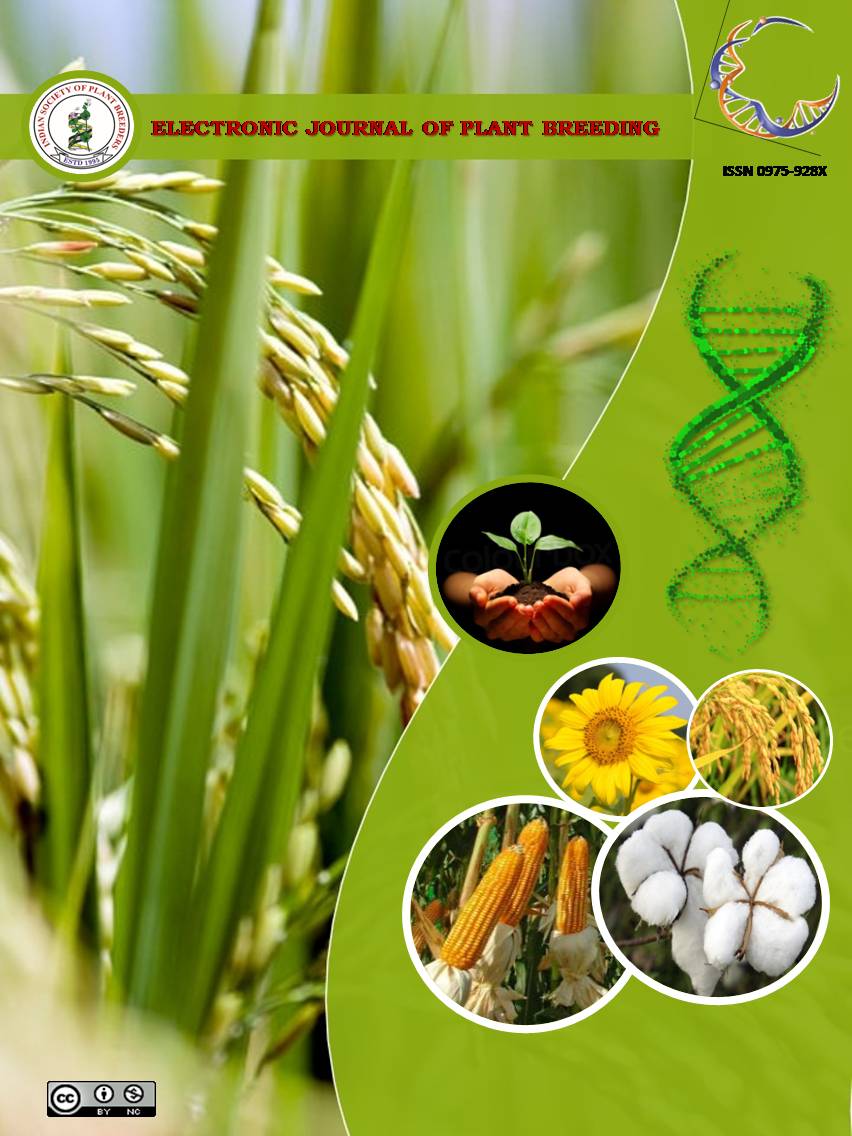Morphological and Molecular diversity studies in Gossypium hirsutum
Abstract
Cotton is one of the most important fibre crops of India. India is having highest cotton growing area however; its production per unit area is low and stagnant owing to several biotic and abiotic stresses. In order to increase productivity, high yielding, biotic and abiotic stress resistant hybrid/variety need to be developed. Hence, an attempt was made to assess the relationship between heterosis and genetic diversity. Identifying the best genotype combinations for the development of commercial hybrids of cotton remains the main challenge to cotton breeders. Genetic diversity of thirteen parents and heterosis in their forty hybrids which were developed by crossing 8 elite Lines with 5 carefully selected Testers in L × T fashion were used to assess the relationship between heterosis and genetic diversity for eleven important yield and yield contributing traits and three fibre related traits in intra hirsutum cotton (Gossypium hirsutum L.). Diversity studies were conducted by using both Mahalanobis D2 statistic and by random 60 SSR markers, which inferred medium genetic diversity between parents. Correlation coefficient of genetic distance with F1 mean performance, mid, better parent heterosis and specific combining ability for all studied traits were statistically non-significant, indicating that prediction of heterosis for complex traits based on these two genetic diversity estimates is difficult.

It is certified that:
- The corresponding author is fully responsible for any disputes arising due to the publication of his/her manuscript.
- The article has been seen by all the authors who are satisfied with its form and content.
- The sequence of names of authors in the by-line is as per their relative contribution to this experiment, giving due credit to all scientists who made notable contribution to it.
- All the authors fully understand that inclusion of any other co-authors or exclusion of any co-authors is not possible once the article has been submitted to the journal.
- The corresponding author takes full responsibility for this article.
- The address of the organization where the research was conducted is given.
- The article is exclusive for this journal, and the results reported here have not been sent (and will not be sent during its consideration by this journal) for publication in any other journal.
- Authors agree to abide by the objective comments of referees and do agree to modify the article into a short note as per the recommendation, for publication in the Electronic Journal of Plant Breeding.
- If published in Electronic Journal of Plant Breeding, the copyright of this article would vest with the Indian Society of Plant Breeders, who will have the right to enter into any agreement with any organization in India or abroad engaged in reprography, photocopying, storage and dissemination of information contained in it, and neither we nor our legal heirs will have any claims on royalty.


